Our guidebook describes this region as “between Central Asia and the plains of Pakistan is a geographical vortex rich in history, cultural diversity and dramatic natural beauty. In this collision zone of the Indian and Asian continents, the Pamir, Kunlun, Hindukush, Karakoram and Great Himalaya ranges are knotted together. In the 1960s, Pakistan and China jointly cut a road across these mountains, following a branch of ancient network of trade routes known as the Silk Road. This Karakoram Highway (KKH) connects the Silk Road oasis of Kashgar with Islamabad, Pakistan’s modern capital, via the 4730m Khunjerab Pass, the semimythical Hunza Valley and the trading post of Gilgit”. We really loved this section of Northern Pakistan. The KKH is truly one of the modern marvels of engineering, with the highest paved international border crossing in the world at 4,693 meters (15,397 feet). Even though we had heard about how spectacularly beautiful Northern Pakistan was prior to our travels here, nothing prepared us for the incredible scenery to be had around every corner.
11 Jul 08: Our five hour drive towards Gilgit meandered through some beautiful areas, and we alternated between snoozing in the back of the jeep to waking up and staring at the passing scenery. Hamid was reluctant to shut our jeep down (for fear that it wouldn’t start back up), but we were forced to when we had to refuel. Sure enough, the jeep wouldn’t start back up, but thankfully after about a dozen attempts, the engine roared to life and we took off. By this point, we made it clear that we needed to talk to a Vertical Explorers representative to discuss swapping our jeep for another vehicle in Gilgit. We didn’t want to envision ourselves stranded out in some remote part of Pakistan, especially somewhere with no cellular phone coverage! Apricots were in full season, and we noticed blankets of orange spread throughout the countryside, with women bent over painstakingly laying out hundreds of apricots to dry. Very cool! Becky had never seen so many apricots in her life, and wanted to stop to watch the women work. But everyone else was eager to reach Gilgit, which we eventually rolled into just before dusk. Gilgit is the capital city of the Northern Areas, and it is located in the foothills of the Karakoram Mountains. We checked into the lovely Hotel Riveria, located across the riverbank of the Gilgit River, on River View Road, Chinar Bagh, Gilgit.
All journey long, we had been dreaming about having Chinese food. Our guide book listed several Chinese restaurants around Gilgit, so we hopped into the jeep to find a nearby restaurant. Lo and behold! The jeep had breathed its last breath and simply would not budge. Hamid valiantly tried to will it to life, but it simply would not start up again. Lucky for us that the jeep finally decided to die in Gilgit instead of on our way there! Zia thought it might be out of fuel, so while we went to check out Internet at Comsats (40 Rupee/hour), Zia and Hamid went to look for some fuel. After checking our email, Zia and Hamid came to pick us up (in a taxi) and confirmed that our jeep was indeed out of commission. We were tired and hungry, so we ate at the Hotel Riveria’s restaurant where Becky has a delicious bowl of hot and sour soup with chicken chow mein and Robby had Mutton Quorma.
After dinner, the receptionist informed us that the hot water was ready in our room, so each took our time in the shower…the hot water felt excellent! At 2230, right when we were getting ready for bed, Zia informed us that our presence was due at the VE manager for Gilgit’s house to discuss arranging a new vehicle. Boy, the last thing we wanted to do so late at night was go to some meeting to get a new vehicle. We later found out that Zia has misunderstood our intent…we were perfectly happy swapping out our jeep for another jeep. However, he thought we were insisting on swapping out the jeep for an SUV. Caught in the middle, we reluctantly got dressed and headed over to the manager’s house, where we all sat by lamp light discussing our plans and desire for a new, replacement vehicle. The VE manager was offering up his personal SUV, but stated it wouldn’t be available for the duration of our trip…just for a few days. Unacceptable for us, since we just wanted to swap our vehicle one time and be done with it. Thank God for Saeed who called on Zia’s cell phone and quickly smoothed things over. Once he understood that we were fine with another jeep, our negotiations ceased and the situation was handled. You can bet we really missed Saeed as our tour guide that night! We returned to the hotel at 0100 and wearily climbed into bed. Mission accomplished though…we had new jeep on the brain as we both fell into a deep slumber.
12 July 2008: We had toast and fried eggs for breakfast at the Hotel Riveria’s second floor restaurant. Becky donated her Dean Koontz book to the receptionist as we checked out of the hotel. Our new jeep was ready and waiting, and we met our new driver, Jan, who hails from upper Naltar (the village we were visiting today). Sadly, we had to bid farewell to Hamid, who was staying behind with our old jeep to ensure it got the necessary mechanical attention it needed. The drive from Gilgit to Naltar was fairly short, but extremely scenic, especially as we drove up towards Naltar, which Becky nicknamed “Little Switzerland”. The alpine like scenery was spectacular, and we pulled over for some apricot picking. Apricots galore were bursting from trees all around us, and we soon filled up a plastic bag full of apricots.
We were lucky that Jan was from the Naltar area, as he definitely knew his way around this area. He expertly maneuvered our jeep through some tight corners and drove us up to Naltar Lake for some chai and apricots. The lake was fairly small and had a greenish hue, but the water was crystal clear. After relaxing here for a bit, we drove even further on what appeared to be undriveable terrain but somehow, Jan got us across. The upper blue-green lakes were absolutely gorgeous and we were very glad that he recommended we take a sneak peak.
On our return trip back down to Naltar, we ran into a polo player who was headed towards practice. He invited us to come watch the impromptu match and we agreed. First, we had to find a place to sleep for the night. We checked at the Hilltop hotel first but they didn’t have any available rooms, so we ended up staying at the 4 View Hotel. It was a brisk walk from the 4 View Hotel to the polo ground, and a large, local crowd had already gathered to watch the match. We watched in excitement and found the match to be equally as entertaining as the Shandur festival’s polo matches. At the culmination of the match, we were invited to mount the horses to strike our best polo pose…which was quite funny because we had quite an audience watching our every move!
Zia had arranged for us to have chicken karai for dinner tonight, but first someone had to go and find a live chicken! Our hotel’s restaurant wasn’t open for business, so we headed over to the Hilltop Hotel, whose staff had agreed to prepare our evening meal for us. The chicken karai dish was a lovely tomato and onion based dish, and we used na’an to scoop out the sauce. Delicious! After relaxing with a cup of green tea, we agreed on a morning departure time before splitting up for the night. Jan was going home to stay with his family, Zia was retiring to his room, and we went on to ours. At the 4 View Hotel, there wasn’t much else to do once the sun went down. However, we did have several hours of power, so we plugged up our laptop and ended up watching movies for the rest of the night.
13 July 2008: We were packed and ready to go at 0800, and were pleased to see Jan and the jeep nearby, ready and waiting. Zia had already decided we would grab breakfast on our way to Hunza, so we said goodbye to the 4 View Hotel owner and were on our way. Jan pulled over at a tea house/restaurant in Rahimabad and while Zia was trying to coordinate breakfast, Becky noticed that one of the window postcards was displaying our Kalash friends. We asked the shopkeeper if we could buy the postcard but he just gave it to us once he found out we knew the ladies on display…how cool! Unfortunately, the restaurant had no eggs, so Zia advised us to press on and hold off on breakfast for a while longer. We agreed, and soon were admiring the gorgeous vista of Rakaposhi (7788 meters). Breakfast was held at the aptly named “Rakaposhi View Restaurant”, where the chefs whipped up a quick order of fried eggs, double parantha, mixed tea…delicious! The view was absolutely incredible, and we were glad that we waited to have breakfast at this location. This stop had the rare souvenir stand, and we stocked up on some postcards (10 for 100 Rupees), and glanced around at the other trinkets for sale. Becky noticed that there was lots of Lapis Lazuli for sale, one of her favorite stones. We had plenty of time to take photos of Rakaposhi, and cheered on a passing vehicle borne wedding procession before climbing back into the jeep for our onward journey to Karimabad.
The scenery was spectacular, and it seemed at every corner that there were women laying out apricots to sun dry. These blankets of orange and red stood out in contrast to the surrounding greenery, and we kept our eyes peeled open, lest we miss a single sight. Finally, the bustling town of Karimabad came into view, and for the second time on the trip, we saw quite a few foreign tourists hiking around town (the first influx of foreign visitors was at Shandur). Baltit Fort loomed in the distance at the pinnacle of Hunza. Our guidebook described Baltit as “Hunza’s ancient capital. Its magnificent fort, on a throne-like ridge with Ultar Nala yawning behind it, has always been the kingdom’s focal point. The fort served as the royal palace for over 750 years until last century, when sounder quarters were built below in what came to be called Karimabad.” We were quite excited to visit the 13th Century Baltit Fort, as it had recently undergone an intensive and phenomenal restoration process. The results were magnificent, and the fort is a tourist magnet for all those visiting the famed Hunza valley. After Zia purchased our entrance tickets, we linked up with a local guide, who explained all the fort details, including the heavy influence from the Tibetans and their Potala Palace. Indeed, it almost felt like a case of déjà vu, as we had visited Potala Palace for the first time a mere 6 months ago! The uncanny resemblance made us wonder just how much influence the Tibetans had over Hunza’s old rulers.
After our Baltit Fort visit (most excellent and highly recommended), we drove down to the bottom of the hill to the Ganish area of Karimabad. Zia gave us 2 choices for lodging, and we settled on the Hunza View Hotel, near the base of Karimabad. Indeed, there was no view of Hunza from the hotel, and we would have had a steep 25 minute hike uphill just to get into the old section of town, but we really liked the Hunza View Hotel. It had a funky feel to it, and combined with super friendly management, made us feel at home for the day. Robby was on a quest to find out if there was hot water, and we were assured there most certainly was so. We had some time to relax before linking back up with Zia and Jan for our sunset excursion, so we chilled out in our room for a few hours. Good thing we had some down time, as we soon realized that we had not visited the Ganish Village. Yes, we had driven through Ganish town, but had inadvertently skipped the village. Our guidebook explained that the village was a hidden gem, and was not to be missed. We confirmed with the hotel staff who explained how to get to the village, and loaded up into the jeep. Lucky of us, one of the village boys, a young man who was on college break, served as our guide and gave us a wonderful tour of his home town. We were incredulous when he explained that the outer perimeter of the village (which skirted a small pool of water), was actually part of the old silk road. He even pointed out niches in the wall where a traveler would tie up his camel and spend a few nights at the nearby caravanserai. Fascinating stuff! We could easily envision travelers tying up their horses/camels to the outer walls, stopping in at the caravanserai, and trading silk for food and shelter. Currently, the old Ganish Village consists of 31 families (down from 100 due to a flood several years ago that caused the majority of the families to seek higher ground). There were several intricately carved, wooden mosques inside the village walls, and our guide showed us the interior of a typical house (upstairs for summer and downstairs for winter). Outside the village walls, we were shown where the glacial runoff was used as an old fashioned “ice box”, where butter is wrapped up and stored underground even today! We learned so much from our young guide, who was the perfect ambassador for his lovely village.
Later that afternoon, we met up with Jan and Zia for the 45 minute drive to Duikar sunset point. Apparently, it is the place to watch the sun go down. First, we had a completely unexpected stop at Altit Village (which is actually a lot more scenic than Ganish Village). The Altit Fort was undergoing renovations, but should be completed by 2009 (according to our local guide). Unfortunately, we were in a rush to get to Duikar in time, so we weren’t able to spend as much time wandering the back alleys of Altit Village as we would have liked. Jan tried his best to make up for lost time by zooming on the tight curves leading up to the lookout point. The road was rather narrow in some places, and it took us a while to reach the top. However, it was worth the rush as the 360 degree view was absolutely breathtaking. We had arrived too late to watch the sun go down, but there was still some rays of daylight painting the soaring mountains and remaining skyline with magnificent hues and shades of color. It was impossible not to be awed at the sight of the mountain tops all around us. What an incredible view!
When it finally got dark out, we reluctantly made our way back down to the Hunza View Hotel. We were both eager for dinner, and asked the hotel staff to prepare our hot water showers for us while we ate. Becky still raves about the most excellent soup she had in Pakistan, the Hot & Sour soup is something she will return to Hunza View Hotel just to partake in again. It was mouthwateringly delicious and served in a monstrous bowl large enough for several people. The rest of our dinner was sumptuous and perfect…a wonderful way to round out one of our best days in Pakistan so far.
14 Jul 08: Breakfast at the Hunza View Hotel was an extravagant affair, and we didn’t expect so much food! With cereal, oatmeal, toast, omelet, tea, juice, fruit, more toast…we had to ask our server to stop bringing out food as we were both absolutely stuffed. Today’s itinerary was really cool…we were to travel up north on the KKH towards Borit Lake, hike up towards the Passu Glacier, and then scramble across the Hussaini Suspension Bridge, before retiring later that afternoon at Minapin’s Diran Guest House, nestled in the foothills of Rakaposhi.
The drive to Borit Lake was interesting, with Jan cautiously driving our jeep across several steep switch backs and zig zagging his way up the mountain. We pulled up alongside the Borith Lake Hotel and walked down to Borit Lake, which was a bit anticlimactic because there was absolutely no activity on the lake itself. Everyone was huddled up at the hotel sipping cups of tea, overlooking the pristine (but empty) lake. After half joking that we should fish for trout, we decided to move onwards to the Passu Glacier, stopping for an intense apricot picking session as the fruit laden trees were simply too irresistible to pass on by. After we filled up an entire plastic bag’s worth of apricots, we started munching on them as we headed towards Passu. The Passu Glacier has been receding in recent years, but we hiked up to catch a fine view overlooking the glacier. Robby and Zia decided to be daredevils as they struck dangerous poses on the cliff’s edges, with nothing to save them if the cliff gave way. It was a misty morning, but definitely a worthwhile visit to Passu. Zia told us we could hike an additional 2 hours uphill if we wanted to see more of the glacier, but we both felt we saw plenty at our lower elevation.
So, the next stop was the Hussaini bridge, which turned out to be the highlight of our day! Our guidebook had it right when it described the bridge as “a cluster of cables with planks and branches woven in. On a windy day it will make you feel like Indiana Jones”. It was a bit daunting to considering crossing the bridge in flip flops (some of the planks were spaced out several feet away from each other, requiring a long stretch!), so Robby suggested we walk barefoot across, as we were sure to lose our flip flops otherwise. What a neat experience! We were truly humbled when a local elderly woman zoomed on pass us, shaking Becky’s hand and urging her to be brave and cross quickly. On our first crossing, we took our time admiring the views of Passu and Ghulkin Glaciers, barely glancing down at the raging Hunza River below. However, on the second crossing, we had built up our confidence and were tackling the river crossing with ease. This was definitely a silly photo session, with all of us striking the most ridiculous poses and laughing the entire time. Zia and Jan made a 1000 Rupee bet to see who could cross the suspension bridge quicker, with Zia making it across in 1 minute 18 seconds, followed by Jan who crossed it in 1 minute 45 seconds. Its tougher than it looks, so try to race across it yourself and see how long it takes! Zia had paid a young local boy to watch our gear in our jeep as we raced back and forth across the Hussaini bridge, and sure enough, when we hiked back uphill, the boy (along with his entourage) were keeping an eagle eye view on our stuff.
We had a short drive to Minapin, where we checked into the lovely Diran Guest House. The orchards and gardens surrounding the guest house were inviting, and we were greeted with a cold glass of fruit juice upon check in. The owner told us that business was down this year, despite Rakaposhi Base Camp being one of the more popular treks in Northern Pakistan. In previous years, this guest house would be absolutely packed with tourists in the middle of summer, but this year, he had only had a handful of visitors. Zia and Jan joined us for a short hike around Minapin, where we hiked uphill for a bird’s eye view overlooking the valley. Becky had a severe case of the sniffles, so she decided to lay down and rest while Zia and Robby hiked further to the top of a hill offering a nice panorama of Rakaposhi Base Camp. Apparently, it’s a 3 day (relatively easy) 18 km hike to reach base camp. Just before dusk, we hiked back down towards our guesthouse, where we enjoyed mutton pie and mutton karai for dinner.
15 Jul 08: We had an extra early wake up call as Becky heard a loud avalanche in the distance at around 4 am. Robby slept through it of course! At 0700, we enjoyed a quick breakfast (tea, omelet, na’an, and oatmeal) before checking out of the Diran Guest House. It was a relatively short two hour drive to return back to Gilgit, where we dropped Zia off to settle some business (and withdraw some additional funds for the duration of our trip). In the interim, Jan took us to see the rock carving Kargah Buddha, a large standing Buddha carved on a cliff face in Kargah Nala. It was a short drive to the 7th Century site, which is located on the outskirts of Gilgit. When we returned back to Gilgit to pick Zia up, we were both relieved to hear that we would keep the jeep for the rest of our tour….good thing, as we had quickly fallen for our new jeep and would be heartbroken if we were forced to swap to another vehicle again. We had planned to link up with Hamid to bid him a proper goodbye, but unfortunately, he had already moved onward with another tour group towards Skardu.
From Gilgit, we had a four hour drive to Astore, our destination for the day. Astore village is located at 2450 meters, and many intrepid trekkers use it as a base to hike the extremely dangerous Nanga Parbat, aptly nicknamed “killer mountain”. We drove from Astore Village up a steep path towards Rama Lake, where we checked into the comfortable PTDC Motel. After enjoying a quick lunch of chicken corn soup, we decided to hike up to the lake, which took us through some really pretty scenery. We stopped to pay a quick visit with a family who had migrated up with their cattle to enjoy the Summer pastures. There were several fishermen trying their luck at trout fishing at Rama Lake, and we hung out for a bit, catching our breath and admiring the sunset. It was nearing dusk when we finally trekked back down to the inviting PTDC Motel. Unfortunately, power was out when we returned, so we had to wait for our fried rice, roasted chicken, and french fries for dinner. All of us were famished and very happy when dinner was served at 2030, albeit by candlelight. After dinner, we crawled into bed, but had to get double blankets to combat the cold. It was rather chilly at night up in beautiful Astore! We were skeptical when the hotel staff assured us we would have hot water showers upon waking up next morning…
16 Jul 08: We still had no power in the morning, but as promised, we had hot water. Glorious hot water! We both took a quick shower to help us wake up and start our day. Our goal today was to make our way from Rama Lake (Astore) to Deosai National Park, where we planned on camping for the night. Breakfast hardly ever varied from day to day, but we didn’t get tired of eating fried eggs, parantha, milk tea, oatmeal and cereal…it quickly became our morning ritual. After checking out of the PTDC, we loaded into the jeep for Deosai. First, a quick stop at the precariously perched Astore bazaar where we were on a quest to find some snacks, fruit, and water for our overnight sojourn at the national park. Perhaps there aren’t too many tourists visiting Astore these days, because we had to laugh at the locals taking photos of us with their cell phone cameras! Too funny. The next urgent matter (after finding food) was to find a place to refuel. Zia explained that one of the reasons we hiked up to Rama Lake yesterday was to conserve fuel, as the Pakistani Government only released new fuel prices twice a month (on the 1st and 15th of every month). Because new fuel prices were just released, gas stations were hoarding their fuel up until yesterday. We passed by several gas stations before finding one that was open for business. Apparently the locals are used to the fuel shortage situation, as everyone came prepared with extra gas canisters which they filled to the brim.
Later that afternoon, we reached Deosai National Park, where we were charged a 585 Rupee entry fee. Our guidebook described Deosai as an immense, grassy plateau bordering Indian-administered Kashmir, which is only accessible a few months out of the year. In 1993, Pakistan declared approximately 3600 square kilometers as a national park area, due to its subalpine vegetation, alpine meadows and Himalayan brown bears. One of the sign posts had a picture of a brown bear, with the logo “shoot only with camera”. Our first stop was at Deosai Lake, which we found to be extremely popular with local tourists. We munched on some delicious mangoes by the lakeside, before continuing on to our camp ground, where we erected our tents for the night. Adjacent to the campground was a low slung bridge, that looked too fragile to support vehicular traffic…it made for plenty of good photo opportunities, with jeeps crossing the bridge, mere inches away from the raging water.
The big excitement for the day was when Becky lost her flip flop in the river. The current quickly swept it away, but some local boys heard about her plight, and chased it down at least half a mile, before jumping into the frigid water to rescue it. Wow…talk about the kindness of strangers. We both retired to our tent after that mishap and decided to read for a bit. Dinner was served in the mess tent, where we enjoyed a vegetarian meal, followed by the obligatory hot, steaming tea. It was COLD out after that, so we huddled in our sleeping bags and crashed out.
17 Jul 08: Mosquito invasion this morning! Dousing ourselves with OFF did not prevent them from biting us. There were literally hundreds of mosquitoes swarming around our tent, our jeep, on our clothes, just everywhere. It was like medusa’s head…kill one and three more would appear. We were a bit put off at the overwhelming number of mosquitoes all around us, and wondered why they only seemed to appear in the morning? We were definitely motivated in packing up our gear and loading up the jeep, as we knew once we started moving, the mosquitoes would not be able to catch up with us. After chatting with the Deosai Park Ranger (who had personally seen plenty of brown bears in Deosai), we bid him farewell and took off. Thankfully, we soon left the mosquito horde behind, and in their stead, we saw plenty of marmots, which looked like fat, overstuffed prairie dogs. These obese marmots would run halfheartedly away from our jeep, before slowing to a trot and then pausing completely in open curiosity. Most of them were too busy focusing on sunning themselves to pay us any attention. Clusters of them would be standing in a row, ears perked and at the ready, watching the latest entertainment pass them by.





















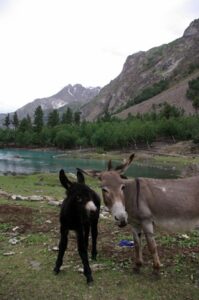



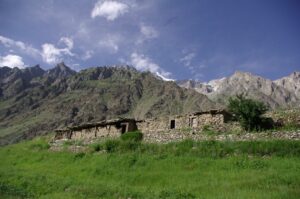





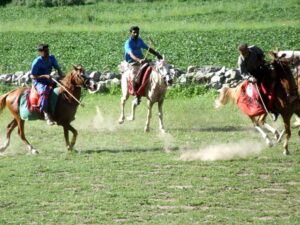




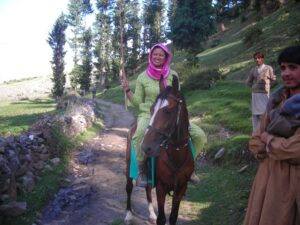


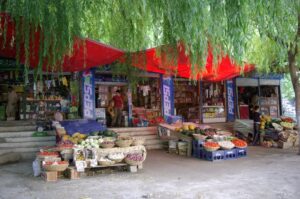





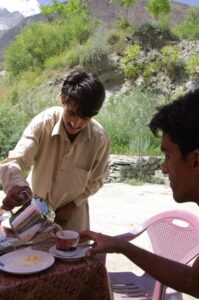











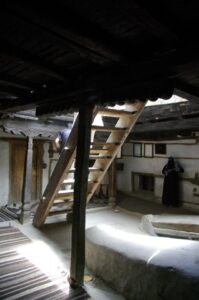






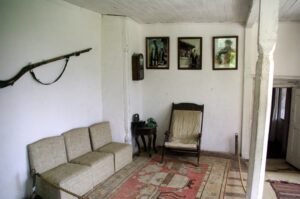
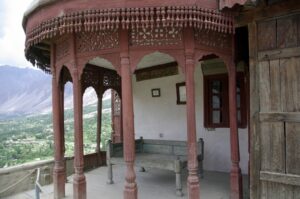









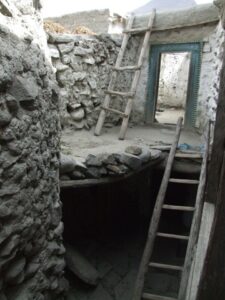



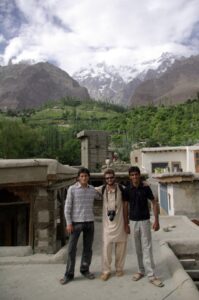


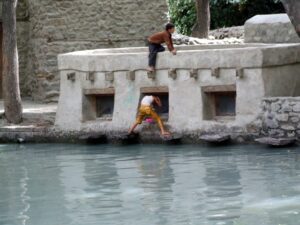



























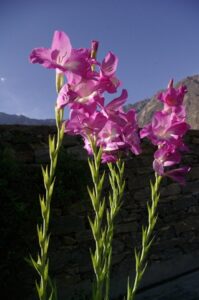


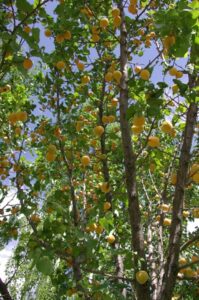











































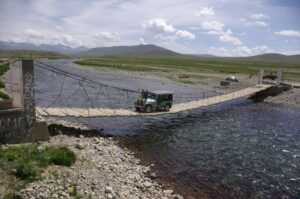
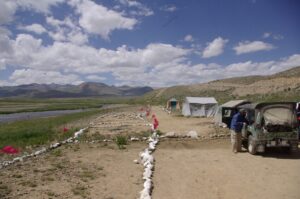
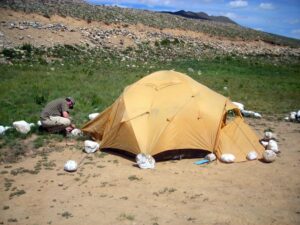

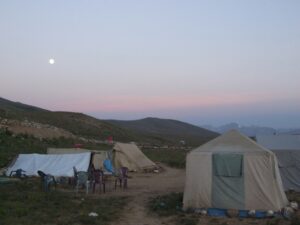







You have highlighted Gilgit-Baltistan Hunza and Dev Sai in a very good way and especially the pictures are most attractive . I feel very happy to thank you.
Thanks for visiting our website! We really enjoyed visiting Pakistan and would love to revisit again one day.